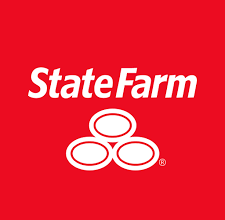White Hat Link Building Ben A Roo

White Hat Link Building: Ben A Roo – Ethical Strategies for Sustainable SEO Growth
White hat link building is a strategic approach to acquiring high-quality backlinks that adhere to ethical standards and best practices set forth by search engines. This method is designed to improve a website’s visibility and ranking in search engine results pages (SERPs) while maintaining compliance with the guidelines established by search engines like Google.
The process of white hat link building involves several key components. First and foremost, it focuses on creating valuable, relevant content that naturally attracts links from other websites. This content can take various forms, including informative blog posts, in-depth articles, infographics, videos, and research studies. By producing high-quality content that resonates with the target audience, website owners can encourage other sites to link back to their content, thereby enhancing their backlink profile.
Another important aspect of white hat link building is relationship building. This involves networking with other industry professionals, bloggers, and influencers to foster connections that can lead to natural link opportunities. Engaging with others through social media, guest blogging, and participating in industry forums can help establish credibility and trust, making it more likely that others will want to link to your content.
In addition to content creation and relationship building, white hat link building often includes outreach efforts. This can involve reaching out to website owners, bloggers, and journalists to share your content and explain why it would be valuable to their audience. Effective outreach requires a personalized approach, where the sender demonstrates an understanding of the recipient’s content and audience, thereby increasing the chances of securing a backlink.
Unlike black hat link building techniques, which may involve deceptive practices such as buying links, using link farms, or engaging in spammy tactics, white hat strategies prioritize ethical practices that contribute to sustainable growth. Black hat methods may yield short-term gains in rankings, but they often lead to penalties from search engines, resulting in a loss of visibility and trust. In contrast, white hat link building fosters long-term benefits by building a solid foundation of trust and authority within the industry.
Ultimately, the goal of white hat link building is to create a robust online presence that not only improves search engine rankings but also enhances user experience. By focusing on quality over quantity, website owners can cultivate a loyal audience that values their content, leading to organic growth and increased traffic over time. This approach not only aligns with search engine guidelines but also contributes to a healthier and more trustworthy online ecosystem.
Ben A. Roo, a seasoned SEO expert, emphasizes that white hat methods focus on creating genuine relationships and providing value rather than exploiting shortcuts. Below, we break down the core techniques, benefits, and principles of this strategy.

Key White Hat Link Building Techniques
- High-Quality Content Creation
- Producing valuable, original content is the cornerstone of white hat link building. Informative articles, guides, infographics, and tools naturally attract backlinks as users reference and share them. For example, a well-researched industry report or a comprehensive tutorial can earn links from reputable sites, boosting your site’s authority.
- Guest Blogging
- Contributing guest posts to authoritative websites in your niche allows you to include contextual links back to your site. The key is to prioritize relevance and quality—publish on platforms whose audiences align with your expertise. This not only drives referral traffic but also establishes your brand as a thought leader.
- Resource Page Link Building
- Many websites maintain resource pages listing helpful tools or content. Identify relevant resource pages in your industry and reach out to suggest your content as a valuable addition. For instance, a digital marketing blog might link to your SEO checklist if it complements their existing resources.
- Broken Link Building
- This involves finding broken links on external websites and offering your content as a replacement. Tools like Ahrefs or Check My Links can help identify dead links. By alerting webmasters to these issues and providing a functional alternative, you build goodwill and secure a backlink.
- Social Media Amplification
- Sharing content on platforms like LinkedIn, Twitter, or niche forums increases visibility and encourages organic sharing. While social signals aren’t direct ranking factors, they drive traffic and attract potential linkers who discover your content through these channels.
Benefits of White Hat Link Building
- Sustainable SEO Growth: Ethical practices align with search engine updates, ensuring long-term ranking stability. Algorithms like Google’s Penguin penalize spammy tactics, making white hat methods a safer investment.
- Enhanced Brand Reputation: Providing value fosters trust with your audience and industry peers, positioning your brand as a credible resource.
- Higher-Quality Traffic: Backlinks from relevant, authoritative sites drive targeted visitors more likely to convert.
- Resilience Against Penalties: Avoiding manipulative tactics protects your site from algorithmic penalties or manual actions.
Risks of Black Hat Tactics
Black Hat strategies—such as buying links, keyword stuffing, or using private blog networks (PBNs)—may offer short-term gains but come with high risks. Search engines increasingly penalize such practices, leading to ranking drops or even deindexing. Ben A. Roo warns that these methods damage credibility and erode user trust, making recovery costly and time-consuming.
Conclusion
White hat link building prioritizes quality, relevance, and ethical engagement. By investing in valuable content, nurturing partnerships, and leveraging organic outreach, businesses can achieve lasting SEO success. As Ben A. Roo highlights, patience and consistency are key—this approach builds a foundation of trust and authority that pays dividends far beyond fleeting ranking boosts. Avoid shortcuts, focus on your audience’s needs, and watch your organic visibility grow steadily over time.


